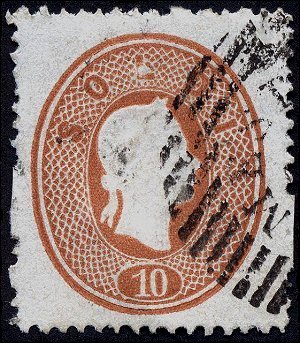When
looking at the antique postage stamps and at their manufacturing system, we
should realize how much the knowledge and the available technology were different
from the today ones; techniques, materials, equipment, papers, inking etc.,
all these did have anything to share with the ones available today.
By looking carefully in a group of stamps we could notice small differences
and anomalies that make them in fact all different from each other. Between
the various elements that characterize the postage stamps we must mention
the defects of the stereotypes (cliché).
The printing stereotypes were getting damaged and even broken often during
the use, at the point that often they were substituted, especially if the
"damage" was evident.
These "inconvenience on the way" left their permanent mark on several
stamps, in a way sometimes constant for several printing runs. Here it is
that having the possibility to observe a large number of samples, we can observe
not uniformity of drawing, frames bumped, interrupted, parts with missing
color, irregularities of various type and nature.
The study of these details often allows for the identification of the sequence
of the printing runs and the usage of the various printing compositions.
Huge was the number of defects, more or less evident, that were left in the
parts of the first issue; usually more numerous in the first printing runs.
Even in the following issues we can find samples with defects on the printing
tools but in a number quite less than before and almost always for occasional
defects. For that reason I will deal here only with the ones of the first
issue. Just for curiosity I show an image of the third issue too (Fig.
1).

Fig. 1: 10
Soldi of the third issue with evident and recurrent defect
on the letter "L' of "SOLDI". It presents also a perforation
very irregular in several places,
while the ribbon on the back of the nape looks solid. It's very interesting
Unfortunately
the Italian catalogues neglect almost completely to deal in detail with this
sector of the collecting, just eventually mentioning briefly them at the most.
Another mistake, to my opinion not irrelevant, has been made while studying
these stamps it has been the getting rid of the subject by often just stating
that the defects were originated by the wear of the printing plates. If for
one side it's true that SOME defect has been originated by the use of the
plates, from the substitution or repair of some stereotype, by fusion defects
that came out and so on, it's never the less UNDENIABLE that several defects
were already present on the plate just at the moment of their first use. Just
to make the point the 15 centesimi of the first type with the letters defective
is not by any chance a repetitive macroscopic stereotype defect?
Another confirmation to my point can be obtained by looking at the "Going
Deep" dealing with the first days of use of the stamps where two
pieces, used June 1st and 2nd 1850, are represented showing already very evident
defects...
A good list of constant defects, somehow well detailed, can be found on the
catalogue Ferchenbauer that shows also their representation.
I just limit myself to show some samples and identify their defects. To my
opinion, the study of these defects is worth of more attention a and it can
become the basis for a collection of great interest and different from the
usual ones.
It's also important not to get confused between real stereotypes defects (and
therefore constant for several printing runs) and eventual occasional printing
irregularities. We see often people defining stereotype defects simple missing
flaws (plate flows) that, even if interesting and nice looking, are
completely a different subject.
To avoid that this page becomes too heavy for the large number of images,
I used a simple Java applet; it's enough to select in the left list the desired
stamp and the image will appear in the window.
|
|
